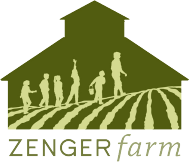“Treating each other and ourselves with care isn’t a luxury, but an absolute necessity if we’re going to thrive. Resting isn’t an afterthought, but a basic part of being human.”― Tricia Hersey, Rest Is Resistance: A Manifesto
In January 2023, we shifted from a 40-hour workweek to a 32-hour workweek, all while ensuring our staff retained their pay and benefits. This shift was the culmination of a year-long preparation. We took intentional steps to gather insights, learning from the experiences of others who had embarked on similar paths, and listening closely to the unique needs of our community. Over the past year, we’ve continued to foster open dialogue, collecting input from our staff through surveys and informal conversations. We are excited to continue to envision a workplace where we all feel cared for, capable, and energized!
Lessons Learned: Insights from Our Team
The response to the four-day workweek was overall positive, with many team members feeling invigorated and less burdened by burnout. Yet, there were also challenges:
- “I feel like I can give my 100% at work because the 3-day weekends give me enough time to replenish my energy from the work week.”
- “The four-day workweek has created the space to care for myself and my access needs.”
- “I have a lot of needs that aren’t able to be met in the workplace, however, I do feel that they are met more than they ever have at any other workplace. Workload and pace is one of them that I feel is not being met.”
Despite these challenges, the majority of our team expressed their commitment to continuing the four-day workweek. We witnessed an increase in internal applicants for positions with elevated responsibility. Additionally, we observed a notable increase in qualified external applicants for posted positions.
Adapting to Realities: Navigating Programmatic Needs
Shifting some of our programming to accommodate a reduced work schedule required extensive, intentional planning that spanned years. However, while this adjustment was relatively straightforward for certain programs, others presented greater challenges. To tackle these obstacles, we are actively implementing strategies such as:
- Revised job expectations and program schedules: We’ve reevaluated job roles and program timelines to better align with our adjusted workflow.
- Surveys: Understanding the impact of these changes on program participants, especially caregivers, is important to us. Through surveys, we’re gaining valuable insight and adjusting program offerings/support.
- Flexible scheduling and overtime monitoring: Recognizing the seasonal ebbs and flows in workload, we continue to use flexible scheduling while balancing overtime to ensure our team’s well-being is prioritized.
Why It Matters: Aligning with Our Vision
Our decision to embrace the four-day workweek aligns deeply with our organizational values and long-term vision. This shift allows us to:
- Promote well-being, fostering a work-life balance that enriches the daily lives of our team members and reduces the toll of burnout and stress.
- Facilitate caregiver support, creating opportunities for a more equitable distribution of responsibilities, and reducing barriers to advancement for caregivers.
- Enhancing staff retention and recruitment by prioritizing work-life balance for our current employees while also showcasing our benefits to attract top talent from both internal and external sources.
- Uphold sustainability, reducing our carbon footprint through decreased commuting and energy consumption.
Moving Forward: Embracing Change
As we celebrate this one-year milestone in our four-day workweek, we continue our commitment to fostering a culture of care and sustainability in the workplace. Our journey towards collective liberation continues, guided by the firm belief that a healthier, more equitable workplace is not only achievable but essential for practicing our collective vision of a just food system.
In addition to these efforts, we are exploring further ways to enhance support for our team and refine our programs to adapt to evolving needs. This includes:
- Investing in professional development: Providing resources and opportunities for skill and team building, like quarterly staff retreats.
- Enhanced Communication Channels: Strengthening internal communication, fostering transparency and collaboration, enabling smoother adaptation to changes and addressing concerns promptly.
- Community Engagement Opportunities: Deepening our engagement with the community allows us to better understand their needs and tailor our programs accordingly, ensuring they remain impactful and relevant.
Embracing change and continuously refining our approach, we are set up to navigate future challenges effectively while staying true to our organizational values.
“It’s not about self-care – it’s about collective care. Collective care means shifting our organizations to be ones where people feel fine if they get sick, cry, have needs, start late because the bus broke down, more slower, ones where there’s food at meetings, people work from home – and these aren’t things we apologize for.”― Leah Lakshmi Piepzna-Samarasinha, Care Work: Dreaming Disability Justice
